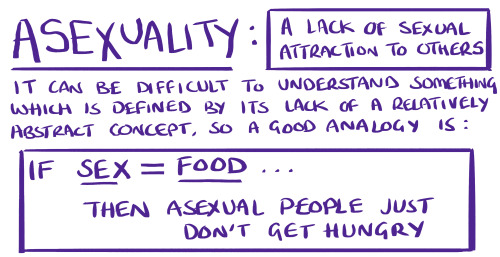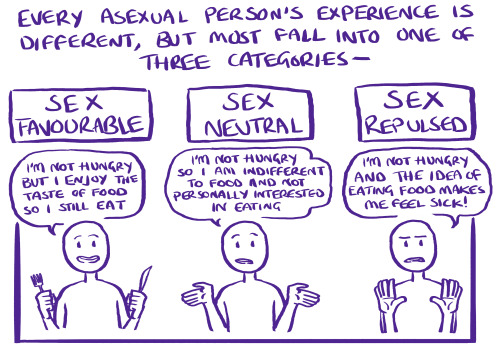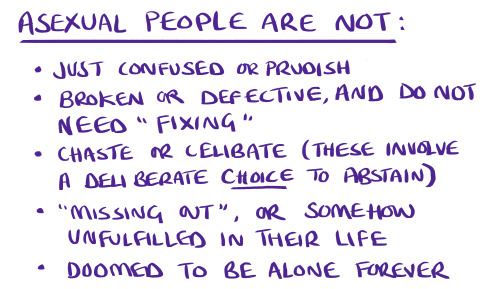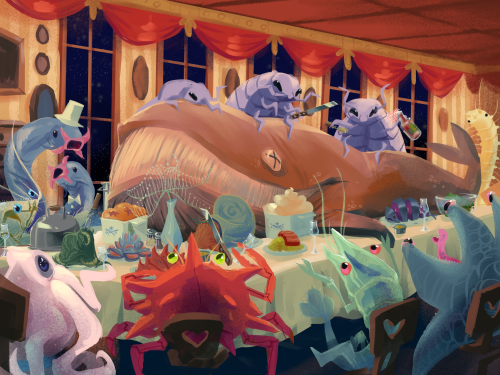Owl Mounted Mouse Priestess

Owl mounted mouse priestess
More Posts from Enbylvania65000 and Others

Here is a comic I got the chance to create for the French Foundation For Medical Research. I feel incredibly honoured and proud to help the research.
Liens : Version française / Dons + en lire plus (FR)
Best author ever
pratchett will write an entire book about the grim reaper pretending to be santa claus while the grim reaper’s granddaughter goes about hunting down the dumbass who decided to kill santa, and then right when you think you’re done and the oddly pointed shenanigans are winding down he hits you with “humans need fantasy to be human. to be the place where the falling angel meets the rising ape,” and knocks you into next wednesday




after the huge amazing response I got from my ace!Jiang Cheng comic - all of the ace people saying how amazing it felt to be acknowledged, and all of the people who came to me saying that they hadn’t realised they were ace until they read the comic - I decided I wanted to make something for ace awareness week. it’s not quite as pretty or feelsy as the other comic, but there are so many people even within the LGBT+ community who just… genuinely do not understand asexuality, I figured even something basic would help :)
happy ace awareness week! please remember: everyone’s experience with sexuality is different! be kind and support each other!

Isopods
They make great mounts: they are docile, big, live long and have a very smooth gait. Not as fast as spiky legged and feisty cockroaches, but they make up for it with their ability to traverse uneven terrain and scale nearly vertical cliffs.
That said, an untrained isopod has the inconvenient habit of rolling up into a ball if it feels threatened. And it will do so with no regard for the rider sitting on top of it.
That's why the farmers who sell them as mounts start riding them as soon as they're big enough to get them used to it. Not without mishaps of course.
Party Split
We’re already a decent large group, but due to over arching plot, three players recent brought back their old characters from a previous campaign for a storyline. Bringing us to nine players.
DM: “Okay, so we have a few ideas on what to do. What first?”
Paladin: “I have some contacts coming to meet me, so I think I have to do my down time here.”
Sorcerer: “We need to got to Halrua and Waterdeep. I’m the only one who can teleport, so guess I’m doing those.”
DM: “Wait, are we finally splitting the party?”
Monk 1: “I also need to do a ritual to attune to the moonblade.”
Cleric: “I can teleport to Waterdeep, I just can’t get back.”
Sorcerer: “I can pick you up at the end of the week!”
Monk 2: “I wanna go to Waterdeep!”
DM: “…okay. Three way split. Not ideal, but–”
Monk 1: “I need to go to the forest for my ritual.”
DM: “Four way split?”
Artificer: “I need research in Candlekeep. We still have that invitation, right?”
DM: “Okay…five way split.”
Bard: “Six, technically. I’m on another plane.”
i hate how antizionists bring up respected historical figures who hated israel and zionism as some kind of gotcha and you can tell they’ve never had to acknowledge that, yeah, a lot of the most beloved historical figures of all time were massive antisemites
Hey, help me please. How do you write description in your novels? Not a character one, surrounding ones. How do you describe from 3 POV , the background of the novel?
5 Tips for Writing Great Descriptions
Hi there! Thanks for writing. I talk at length about this in my book The Complete Guide to Self-Editing for Fiction Writers (See Chapter 4 / “Building Your Story World,” Chapter 16 / Setting the Scene, and Chapter 21 / “Choosing the Right Details” for the majority of the discussion about description, but it’s peppered throughout), so I’ll just give a brief rundown here. :)
Tip #1: Use concrete, sensory details
That means describing, with precision, a detail you can see/hear/touch/taste/smell. Avoid using vague words that are hard to visualize or sense, like “the house was ugly” or “the weather was bad.” Instead, choose a sensory detail (or two) for your descriptions, for example “the house was a wretched shade of salmon pink” or “the wind was blowing I could taste dust in my mouth.”
Tip #2: Try not to over- or under-use descriptions
It’s common for beginning writers to either use no description, or go completely overboard. I give examples of both in my book. While there’s no hard rule about how much description is too little or too much (it depends a lot on the particular story, genre, and the writer’s style), I personally like to include around 4-5 sensory details per page.
The idea is to give the reader a solid sense of where they are without going on and on, making them want to skim over as you carry on for paragraphs about the smell and texture of a doily.
Tip #3: Use more description during important parts of the story
Description draws your readers attention to what you’re describing. Use that to your advantage. If that doily contains a blood stain that’s a pivotal clue in your murder mystery, by all means spend three sentences describing the particular color red of the blood or the weird smell it emits. Where you linger, the reader will linger.
Tip #4: Use description to set the scene
Use more description at the beginning of a new scene, or anytime the location of your story changes. I talk about this in the section on transitions in my book. Summary gets a bad reputation in fiction, but these transitional paragraphs are the perfect time to paint the scene with sensory details about your character’s surroundings.
Tip #5: Pay attention to “camera movement”
One common thing I see in writer’s manuscripts is what I call “jerky camera movement.” Here’s an example:
Jesse pulled into the driveway of the suspect’s mansion around noon. A white, floppy dog barked ferociously in the window. It was a warm, sweltering day. Jesse looked down and realized her shoe was untied. The house had three large columns in front, each wrapped with a gawdy red bow.
In this example, the “camera” moves from the driveway, to the dog in the window, to the “day,” to Jesse’s shoe, to the outside of the house. If that was your head, looking around the scene, you’d get dizzy pretty fast. Here’s a smoother movement, starting wide and focusing in on Jesse’s untied shoe.
It was a warm, sweltering day. Jesse pulled into the driveway of the suspect’s mansion around noon. The house had three large columns in front, each wrapped with a gawdy red bow. In the window, a white, floppy dog barked ferociously. As Jesse approached the door, she looked down and realized her shoe was untied.
These aren’t perfect examples because I’ve dashed them off just now, but you get the idea :) Try not to make your reader seasick by making them look all over the scene (unless you’re trying to achieve that effect, for example, in a scene where your protagonist is drunk or discombobulated).
Hope this helps!

bento’s garden follow me on twitter / instagram / patreon / shop / leave a tip
-
 calamityarti liked this · 1 month ago
calamityarti liked this · 1 month ago -
 axolotlnoise reblogged this · 3 months ago
axolotlnoise reblogged this · 3 months ago -
 hyuckie liked this · 3 months ago
hyuckie liked this · 3 months ago -
 darthbloodorange reblogged this · 3 months ago
darthbloodorange reblogged this · 3 months ago -
 meteolojix liked this · 3 months ago
meteolojix liked this · 3 months ago -
 cricketblabbers liked this · 3 months ago
cricketblabbers liked this · 3 months ago -
 solqrays reblogged this · 3 months ago
solqrays reblogged this · 3 months ago -
 solqrays liked this · 3 months ago
solqrays liked this · 3 months ago -
 artsy-book reblogged this · 3 months ago
artsy-book reblogged this · 3 months ago -
 decus-ornatus liked this · 3 months ago
decus-ornatus liked this · 3 months ago -
 cari-plans liked this · 4 months ago
cari-plans liked this · 4 months ago -
 afforio liked this · 5 months ago
afforio liked this · 5 months ago -
 ourcoralstar reblogged this · 5 months ago
ourcoralstar reblogged this · 5 months ago -
 ieleman reblogged this · 5 months ago
ieleman reblogged this · 5 months ago -
 bincasslas reblogged this · 5 months ago
bincasslas reblogged this · 5 months ago -
 khey-s reblogged this · 6 months ago
khey-s reblogged this · 6 months ago -
 khey-s liked this · 6 months ago
khey-s liked this · 6 months ago -
 magicular reblogged this · 6 months ago
magicular reblogged this · 6 months ago -
 harleyscandytardis reblogged this · 6 months ago
harleyscandytardis reblogged this · 6 months ago -
 harleyscandytardis liked this · 6 months ago
harleyscandytardis liked this · 6 months ago -
 melonkneesimblr liked this · 6 months ago
melonkneesimblr liked this · 6 months ago -
 la-caro-waaa liked this · 6 months ago
la-caro-waaa liked this · 6 months ago -
 nincyn liked this · 6 months ago
nincyn liked this · 6 months ago -
 cutesiewooren reblogged this · 7 months ago
cutesiewooren reblogged this · 7 months ago -
 escapeisathandfortravellingman liked this · 7 months ago
escapeisathandfortravellingman liked this · 7 months ago -
 zomsaurus reblogged this · 7 months ago
zomsaurus reblogged this · 7 months ago -
 cocktail-party-in-an-abattoir reblogged this · 7 months ago
cocktail-party-in-an-abattoir reblogged this · 7 months ago -
 annpipskey liked this · 7 months ago
annpipskey liked this · 7 months ago -
 cocktail-party-in-an-abattoir liked this · 7 months ago
cocktail-party-in-an-abattoir liked this · 7 months ago -
 terri104 reblogged this · 7 months ago
terri104 reblogged this · 7 months ago -
 stylisticlikeameowstic liked this · 7 months ago
stylisticlikeameowstic liked this · 7 months ago -
 mokia reblogged this · 7 months ago
mokia reblogged this · 7 months ago -
 flyingbooks42 liked this · 7 months ago
flyingbooks42 liked this · 7 months ago -
 matriaya reblogged this · 7 months ago
matriaya reblogged this · 7 months ago -
 thenightetc liked this · 7 months ago
thenightetc liked this · 7 months ago -
 carefulmisbehaving reblogged this · 7 months ago
carefulmisbehaving reblogged this · 7 months ago -
 carefulmisbehaving liked this · 7 months ago
carefulmisbehaving liked this · 7 months ago -
 theothin reblogged this · 7 months ago
theothin reblogged this · 7 months ago -
 theothin liked this · 7 months ago
theothin liked this · 7 months ago -
 rendakuenthusiast liked this · 7 months ago
rendakuenthusiast liked this · 7 months ago -
 mouserave liked this · 7 months ago
mouserave liked this · 7 months ago -
 argumate reblogged this · 7 months ago
argumate reblogged this · 7 months ago -
 antonio-teixeira liked this · 7 months ago
antonio-teixeira liked this · 7 months ago -
 rugiagelelight liked this · 7 months ago
rugiagelelight liked this · 7 months ago -
 lovekviryou reblogged this · 8 months ago
lovekviryou reblogged this · 8 months ago -
 daemonmage liked this · 8 months ago
daemonmage liked this · 8 months ago -
 owlbean reblogged this · 8 months ago
owlbean reblogged this · 8 months ago -
 gooofygoobersblog liked this · 8 months ago
gooofygoobersblog liked this · 8 months ago -
 saltyprincetrash liked this · 8 months ago
saltyprincetrash liked this · 8 months ago -
 elizabethkawaii17 liked this · 9 months ago
elizabethkawaii17 liked this · 9 months ago



